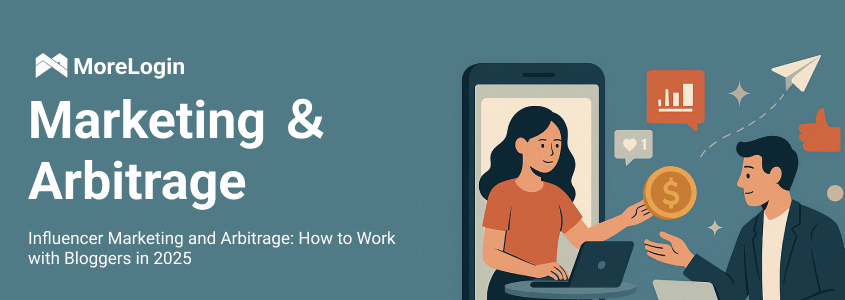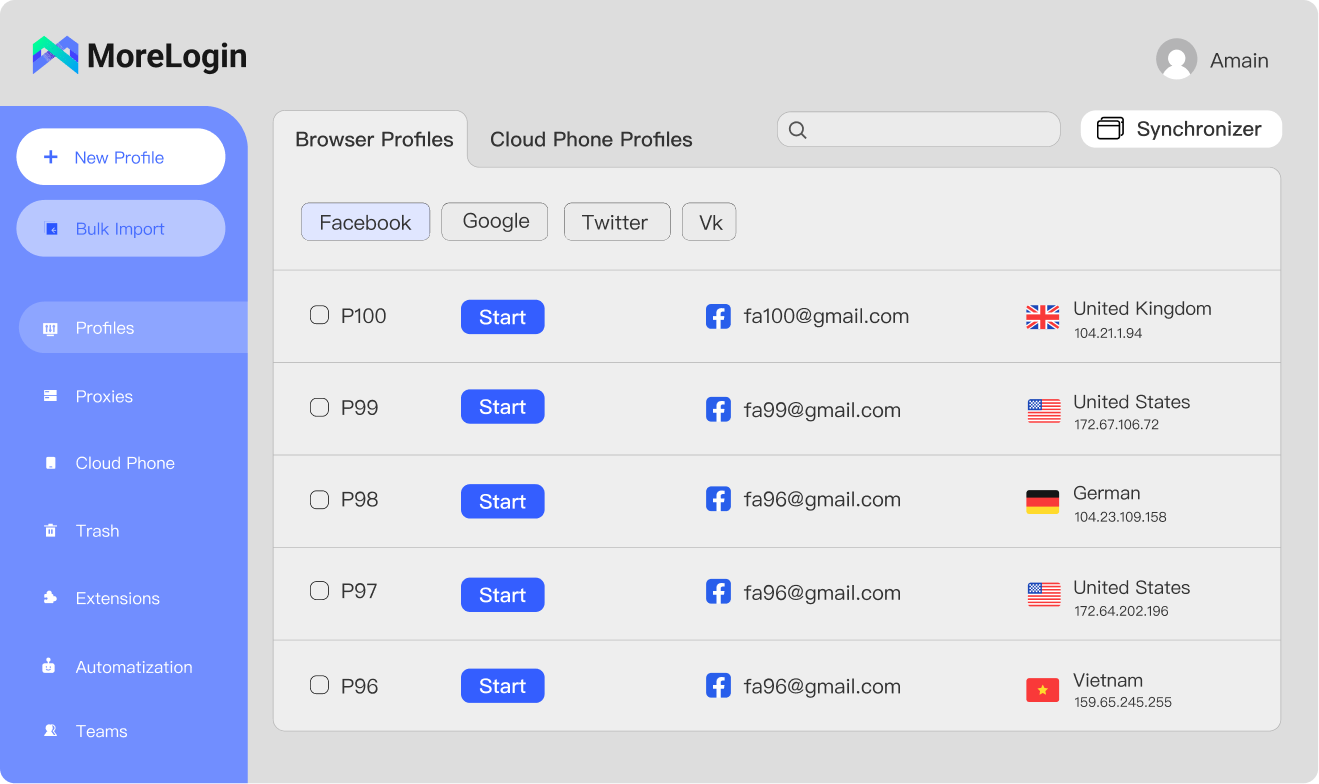
- Product

- Pricing
- Affiliate Program
- Use Cases
- Resource


In 2025, Influencer Marketing Tops Arbitrage Traffic Sources. According to a study by Matter Communications, 69% of consumers trust blogger recommendations when choosing a product, and 76% are willing to purchase a product after seeing a social media post.
In this article, we will cover:
How to launch arbitrage offers through influencers;
Which formats work best;
Key factors to consider when selecting a blogger.
Influencer marketing combines broad reach with high audience loyalty. A single integration video or post can generate leads for weeks, not just immediately after publication.
A warm, "trusting" audience;
The ability to choose a blogger tailored to a specific offer (based on topic, geo, gender, and age of subscribers);
Content works in a delayed format (videos, stories, posts remain accessible and continue driving traffic).
Offer alignment: Ensure the advertiser permits traffic from bloggers.
Geo relevance: The blogger may speak one language, but their subscribers might live in different countries.
Finding bloggers in the right region: Take your time—analyze engagement, stats, and reviews.
The popularity of micro-influencers: The trend has shifted toward bloggers with audiences under 100K. They often have higher engagement and trust.
Unpredictable results: Neither you nor the blogger can guarantee specific outcomes from the advertisement.
Before searching, define your target audience and where they spend their time.
Facebook: Audience 30+, mixed gender.
TikTok: Youth with quick engagement.
Instagram: A great channel for promoting female-oriented offers.
YouTube Shorts: Ideal for short, captivating creatives.
Arbitrage communities, Discord servers, forums (e.g., ZorbasMedia, CPA.Rip, Affhub) often share trusted bloggers or look for collaborations.
For large budgets or niches where image matters, it’s better to go through influencer representatives. You can find them via their website, bio contacts, or on the same platforms.
Manual scraping: By topic, geo, activity.
Recommendations: From colleagues, forums, or personal experience.
Influencer marketplaces: For example, Epicstars, Getblogger (may require an individual entrepreneur or legal entity).
Agencies: They select, coordinate, and launch the ad “turnkey.”
Before searching for a blogger, it’s important to understand what you want to achieve:
Sales (CPA/arbitrage): Look for bloggers with an engaged, "warm" audience.
Brand awareness: Collaborate with major influencers.
Traffic to website/app: Focus on platforms where links are easily shared (YouTube, Telegram, VK, Threads).
Reactions and feedback: Micro-influencers with high engagement are effective.
Define the Ideal Influencer Profile
Ask yourself:
On which platform does your target audience spend time?
Do you need an expert or an entertainment blogger?
What content style do you require: expert, lifestyle, humorous, provocative?
What tone of communication fits your goals: formal, youthful, provocative?
Evaluate the “Human Factor”
Even perfect stats don’t guarantee success if the blogger:
Fails to effectively communicate the offer;
Produces dry, "lifeless" ad integrations;
Doesn’t align with your values or audience.
Review 5–10 previous posts or stories where they promoted something. Check the comments: Do followers trust, engage, or purchase?
Choosing a blogger is not about "who has the most followers." It’s a strategic task requiring data analysis, goal alignment, and a human approach. Invest time in analysis, and your campaign will multiply reach, sales, or awareness.
Direct collaboration: Negotiate with the blogger, provide the offer, and they create content.
Become the blogger: Run your own account, create content, and promote offers.
Stories through characters: Create a fictional blogger/user who shares their experience with the product (e.g., weight loss, treatment).
This approach works best in Tier-2 countries, where audiences actively follow advice and trust opinions.
How to Build a Funnel
The blogger highlights a problem.
Shares a solution—the offer.
Publishes personal experience (usage, results).
Provides a link to a pre-landing or landing page.
Subscribers see details, reviews, promotions—and place an order.
Example for a weight loss offer:
The blogger mentions gaining weight. Then shares a solution. Provides a review and shows results. Finally, a promo code and purchase link are offered.
Influencer marketing often involves managing multiple accounts—for example, agencies creating fake "influencers" to promote brands, companies testing reach through micro-influencers, or using bots/fake accounts to boost followers, likes, comments, etc.
In traffic arbitrage niches, influencers sometimes promote affiliate links. To track and manage dozens of accounts on Instagram, TikTok, and YouTube without risking bans, arbitrage experts use the MoreLogin anti-detect browser.

Creativity over quantity: Users are tired of repetitive scripts—originality is key.
Microbloggers take the lead: They are more responsive, cost-effective, and have warmer audiences.
Transparency and legality: Users are more vigilant. No deception—only honest promises, disclosure of contraindications, and full composition details.
Additional warm-up: Directing users to a fan page or an article with detailed information works better than leading them straight to a landing page.
In 2025, success goes to those who carefully choose bloggers and build trust-based funnels, rather than simply outspending competitors. The focus is on honesty, creativity, and a deep understanding of the target audience.
Influencer marketing has matured into a powerful tool in arbitrage. Use it effectively to maximize traffic outcomes.